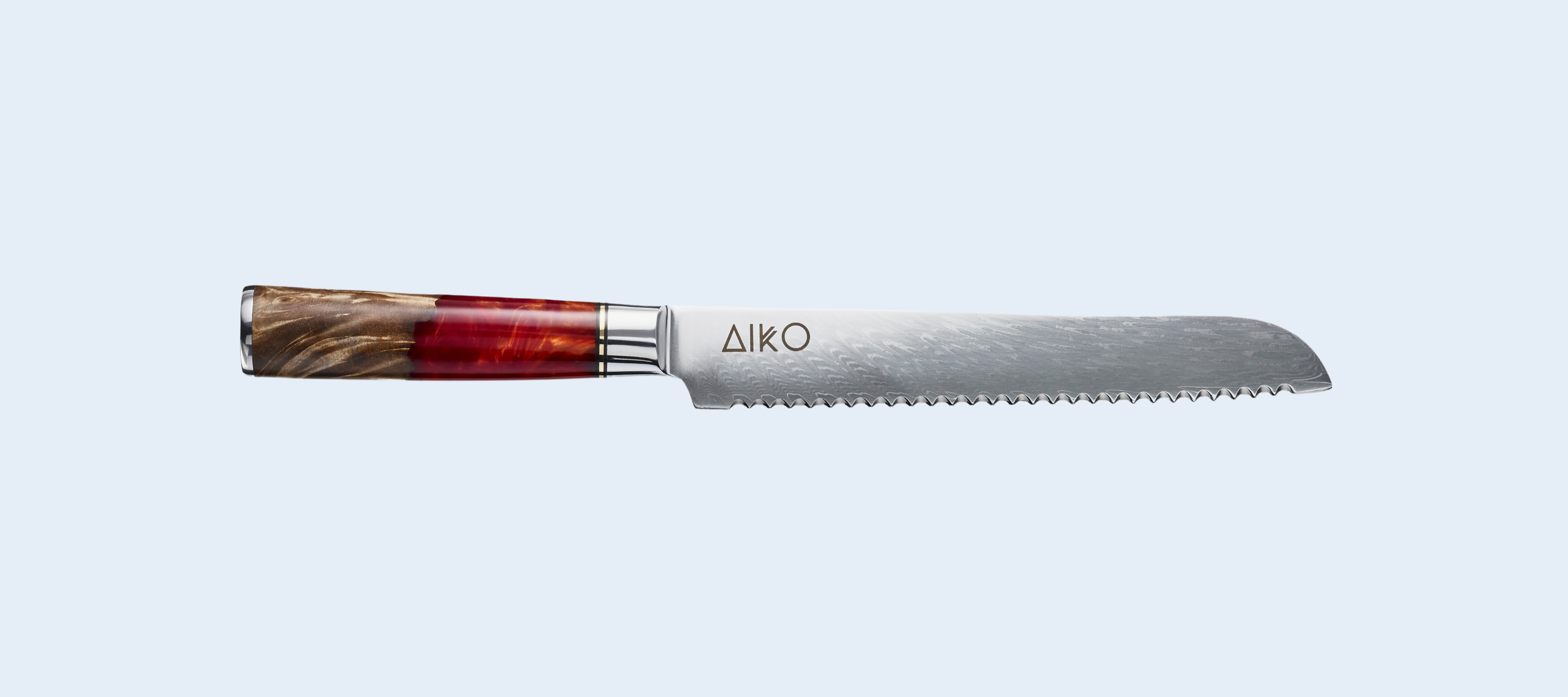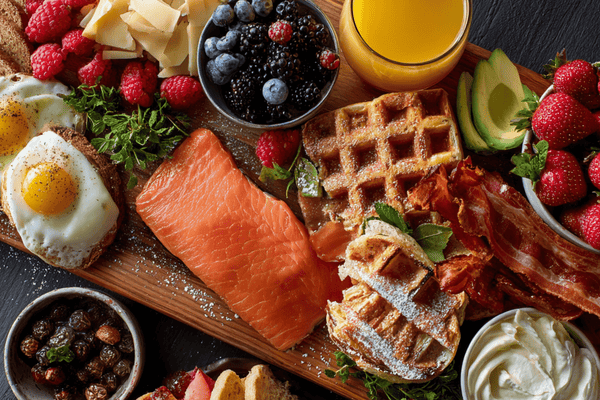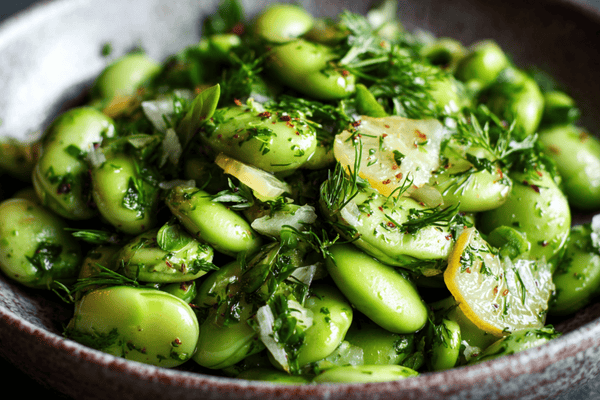 We are told that we must eat our five a day. Fruit and vegetables are so good for you and provide you with essential nutrients that keep your body working as it should.
We are told that we must eat our five a day. Fruit and vegetables are so good for you and provide you with essential nutrients that keep your body working as it should.If you’ve got a hankering for fruit, one thing you may have noticed is that preparing your favourite fruits can be difficult. But it’s not the fruit’s fault so don’t let that put you off. In fact, the reason you’re probably finding cutting fruit a challenge is that you aren’t using the correct equipment.
Choosing the best knives for fruits is essential if you want clean, precise cuts that don’t damage the food.
In this guide, we discuss the various types of stainless steel blades that are perfect for preparing a tasty fruit salad, no matter how big or small your chosen fruits are. So whether you’re a watermelon lover, a grape connoisseur or someone who loves weird and wonderful fruits, we’ve got the right knives for you!
Table of contents
What is the Best Knife for Large Fruits?
The bigger the fruit, the bigger the knife you’re going to need. It’s no use trying to tackle a huge melon with a paring knife. Not only is this going to be extremely difficult but it’s also dangerous. Fortunately, the two best knives for large fruits are something that most people have in their kitchens already; yes, we’re talking about the santoku knife and the good old chef’s knife!
Santoku Knife
 Smaller knives, like the paring knife, are often a go-to for people when cutting fruit. However, when you have bigger items like watermelons or pineapples, these knives just aren’t big enough. Instead, you’ll need to use a santoku knife which is typically around six to eight inches and gives you much greater scope to cut larger fruits.
Smaller knives, like the paring knife, are often a go-to for people when cutting fruit. However, when you have bigger items like watermelons or pineapples, these knives just aren’t big enough. Instead, you’ll need to use a santoku knife which is typically around six to eight inches and gives you much greater scope to cut larger fruits.What’s brilliant about these knives is that they’re excellent for avoiding fruit sticking to the knife. If you’ve ever tried to cut fruit using a knife without divots, you may have found that you have to knock the slices off the knife but this won’t be the case with a santoku.
It is important to use the right cutting technique when using a santoku knife for fruit as this makes it more efficient and of course, safer. You’ll need to place the palm of your hand onto the spine as you push the knife through the fruit. The benefit of this is that you get a much more powerful cut as well as greater control.
Most kitchens are equipped with a santoku knife but if you don’t have one, you shouldn’t be concerned that buying one will be a waste of money and you’re only going to use it to cut fruit. Quite the opposite. Santoku knives are incredibly versatile and can be used for everything from fruit to veggies, cheese, meats and much more. If you buy one, you’ll find yourself often reaching for it when preparing all kinds of foods.
Chef's Knife
 Where the santoku knife is considered a multipurpose tool, the chef’s knife goes even further. This is one of the most versatile knives in the kitchen and is found in pretty much every knife collection you’ll buy. Of course, you can buy them individually as well.
Where the santoku knife is considered a multipurpose tool, the chef’s knife goes even further. This is one of the most versatile knives in the kitchen and is found in pretty much every knife collection you’ll buy. Of course, you can buy them individually as well.One of the main issues that people have is that the chef knife has a rather long blade which can be as long as 13 inches at the extreme end of things. Some people find that this long blade is very difficult to control but it’s worth keeping in mind that there are chef’s knives as small as 6 or 7 inches so you will be able to find something you’re comfortable using.
The main difference between this and a santoku knife is that the chef’s knife has a pointed tip whereas the santoku has a rounded or square tip.
These knives offer superior efficiency when it comes to cutting large fruits as well as a whole host of other things. You’ll use your chef’s knife for everything from slicing to dicing and mincing. Look for something with a roughly 7 to 8-inch blade which will make the knife feel well-balanced and easy to control but still makes it suitable for larger items.
Bonus Knife for Large Fruits - The Bread Knife
 The name bread knife is a bit misleading. While this serrated knife is ideal for cutting loaves and other baked goods, it's also great as a vegetable knife and for thick-skinned fruits.
The name bread knife is a bit misleading. While this serrated knife is ideal for cutting loaves and other baked goods, it's also great as a vegetable knife and for thick-skinned fruits.They have a serrated blade which makes it very easy to cut through foods without squishing them. When it comes to cutting through something like watermelon skin, the serrations give much greater grip and the sawing motion will cut through with great ease. If you don’t want to over-exert yourself in the kitchen, this is a knife worth considering.
What's the Best Knife for Smaller Fruits?
Just like large fruits, small fruits require the use of certain types of knives if you want to cut them safely and easily. There are a few choices and again, they’re knives that almost everyone will already have at home so you won’t need to worry about buying any additional equipment.
Paring Knife
 Santoku knives and chef’s knives are great but they’re not suitable for things like apples, strawberries and other small fruits. These knives have much smaller blades, typically between 2 and 4 inches and they offer excellent control for smaller food items.
Santoku knives and chef’s knives are great but they’re not suitable for things like apples, strawberries and other small fruits. These knives have much smaller blades, typically between 2 and 4 inches and they offer excellent control for smaller food items.Again, you can use this thin blade for all your favourite small fruits but paring knives are versatile enough for other things such as mincing garlic. Moreover, a paring knife is perfect for peeling small fruits like apples, pears and kiwis.
The size of the paring knife you’ll use will depend on what fruit you are working with but again, this is something that most kitchens will already be equipped with and in many cases, domestic chefs have more than one paring knife. If you don’t, the good news is that they’re one of the more affordable types of knives.
Utility Knife
 The utility knife is another of the best multipurpose kitchen knives and something you’ll often find yourself reaching for when it comes to cutting fruits. Many would compare it to a chef’s knife, only smaller and it’s ideal for pretty much any type of small fruit.
The utility knife is another of the best multipurpose kitchen knives and something you’ll often find yourself reaching for when it comes to cutting fruits. Many would compare it to a chef’s knife, only smaller and it’s ideal for pretty much any type of small fruit.Much like the paring knife, utility knives are not going to break the bank so if you haven’t already got one, it’s easy enough to go out and buy one. The blade on these knives is typically a little longer than a paring knife but shorter than a chef’s knife.
This sharp knife is great for cutting and peeling fruits and will also come in handy for an array of vegetables, herbs and other foods.
Specialist Knives and Other Equipment
Sometimes, a regular knife just might not cut it. But there are other items that you can get your hands on to make cutting fruit a breeze, even when it previously felt like a challenge. Here are some tools you might consider investing in if you’re a big fruit lover!
Grapefruit Knife
 You may have seen a grapefruit knife and not realised what it’s designed for. These knives have a curved stainless steel blade which allows you to remove the grapefruit segments from the rind. What’s great about these knives is that using them means you don’t get as much food waste as you would when using something like a utility knife.
You may have seen a grapefruit knife and not realised what it’s designed for. These knives have a curved stainless steel blade which allows you to remove the grapefruit segments from the rind. What’s great about these knives is that using them means you don’t get as much food waste as you would when using something like a utility knife.
Tomato Knife
 Tomatoes can be notoriously difficult to cut but there is a better way. A tomato knife has a serrated edge which is far better for cutting through delicate-skinned fruits like this. The serrated edge won’t apply as much force onto the fruit, therefore, avoiding squashing it.
Tomatoes can be notoriously difficult to cut but there is a better way. A tomato knife has a serrated edge which is far better for cutting through delicate-skinned fruits like this. The serrated edge won’t apply as much force onto the fruit, therefore, avoiding squashing it.Instead, it uses a sawing motion that gets through the skin and softer insides without damaging the fruit. What’s great is that these knives can be used for a whole host of other ingredients including vegetables, other soft fruits and cheese.
Melon Baller
 OK, it’s not exactly a knife but a melon baller is worth mentioning when it comes to fruit prep as it can be a real lifesaver.
OK, it’s not exactly a knife but a melon baller is worth mentioning when it comes to fruit prep as it can be a real lifesaver.I’ve spent many a frustrating minute in the kitchen trying to cut melon free from its thick skin. It’s not easy and it can be pretty dangerous if you don’t use the right technique.
But once you’ve cut the melon to reveal the juicy inners, you’re much better to use a melon baller to extract the fruit. These are very similar to ice cream scoops only a lot smaller and will allow you to scoop out delicious melon balls with its sharp edges, without a knife in sight!
Final Thoughts
Choosing the right knife for cutting fruit is super important if you want to do the job easily and safely. There are so many knives to choose from that it can make getting it right difficult and a lot of people just grab whatever is nearest.But this means that you’ll find yourself having to struggle when you could have simply chosen a different knife and had a vastly different experience.
Generally speaking, you’ll want to use either a santoku or a chef’s knife for larger fruits whereas a paring knife or utility knife will work better for small fruits.


